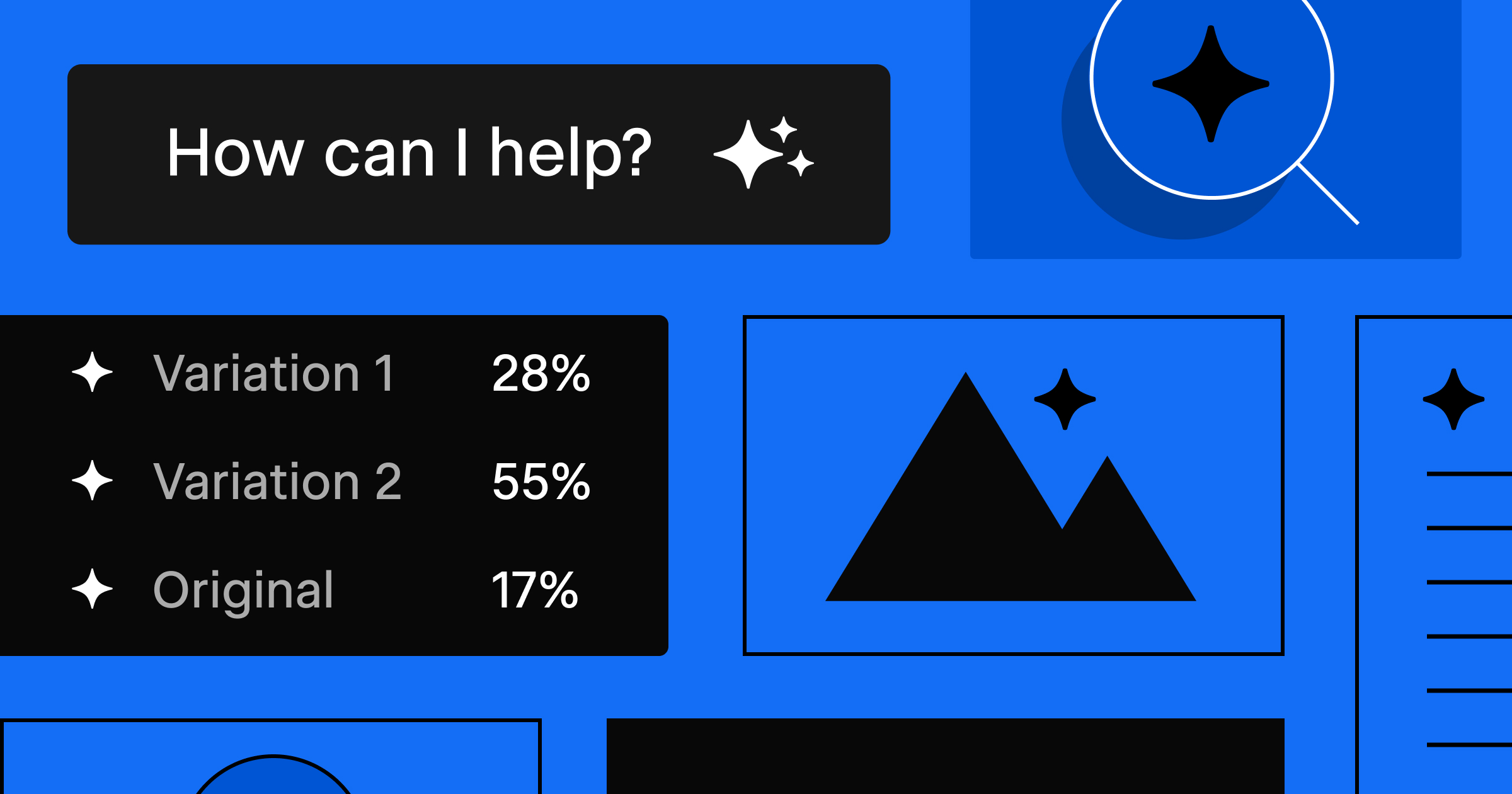A few years ago, I never thought I’d be thinking this deeply about the personality of software.
Tools didn’t need charm; they just needed to work! But the rapid evolution of non-deterministic conversational AI has completely rewritten that perspective.
Because AI isn’t just a tool anymore; it’s something we interact with. It talks to us, reacts to us, sometimes even anticipates us. When technology reaches that level of familiarity, personality stops being an accessory. It becomes the foundation of trust and experience.
The future of AI will be defined not only by what it can do, but by how it makes us feel while we use it.
So, I want to explore how to craft AI personalities with intention, because the way we shape AI’s voice will determine how people engage with it, and how we, in turn, are shaped by it.
To put it simply: How do we make this new era of technology more human-centered?
What it means to be human (in the age of AI)
Before we dive into designing personality, let’s pause and ask: What does it really mean to be human?
There’s no single answer. Different disciplines give us different lenses.
- Biology reminds us of our evolved bodies and brains.
- Psychology speaks to our emotions, imagination, and drive for growth.
- Philosophy is about our search for meaning.
- Religion looks to something greater than ourselves.
- Art shows our ability to transform experience into expression.
- Anthropology highlights our unique capacity to create culture and shared meaning.
I’ll admit my bias as an anthropologist — but I can safely assume that for most of us, at least one or more of these perspectives resonate.
Each of these lenses remind us that being human is layered, complex, and can’t be reduced to one idea or system. We’re more than the sum of our parts.
But there’s also something else that defines us — our drive to extend ourselves through tools. From the wheel to the internet, humans have always built technology that reshapes what it means to be human.
AI is just the latest chapter in that story. And a strange one, at that, because it’s not just helping us anymore. It’s imitating us — sometimes, even replacing us.
The line between humans and tools is becoming increasingly blurred. Are we heading toward something post-human, where being human can’t be separated from the technology we create? Maybe. But I’ll let the sci-fi fans among us take that one. It does raise an important challenge though. If AI is becoming more human-like, how do we intentionally shape its personality before it shapes us?
Designing human-centered AI
AI is learning to talk, react, and express itself more like us everyday. That’s exciting, if unsettling, but it also creates new design challenges.
Research shows that people want AI to “sound like them.” When technology mirrors our tone, phrasing, even humor, it makes conversations smoother and more natural. Making AI feel human-like isn’t just a UX choice. It shapes trust, expectations, and the kind of relationships people will have with these systems.
And here’s the catch: whether we choose to be intentional about it or not, AI already has a personality.
Every word choice, tone, phrasing, structure adds up to form a personality. We may as well design it deliberately — helpful, relatable, and grounded in empathy. If UX has always been about making digital experiences feel human-friendly, why wouldn’t we apply the same thinking to AI?
From tool to teammate
People who get the best results from AI aren’t just using it like a tool. They’re working with it like a teammate.
That’s not just a nice metaphor, it’s backed by research.
Stanford University studies have shown that the most effective AI users treat it like a partner. They give it context, feedback, and goals. The more they collaborate, the better the results.
That shift transforms how we design AI interactions. It’s no longer just about usability, it’s about relationship design. And this is exactly where content design plays a crucial role.
Because content design isn’t just about words. It’s about shaping meaning, tone, and experience — the building blocks of personality.
How we craft personality at Webflow
So how do we design AI that feels human-centered and consistent? Here’s the framework our Content Design team uses to design personality for AI systems, including our own at Webflow. It’s simple, but powerful.
Step 1: Define goals and user outcomes
Personality isn’t decoration; it has to serve a purpose. Start by asking what it should do for the product and the user. Build trust? Create delight? Improve efficiency?
Start with the user outcomes first, then define what you want people to feel – e.g. supported, understood, empowered. And decide what it shouldn’t do — e.g. mislead, impersonate, distract.
The key is to frame personality by outcomes instead of traits. That keeps it intentional, measurable, and tied to real user value.
Step 2: Define tone, not just voice
Voice gives you consistency. Tone brings personality to life.
Tone depends on context and role. Is your AI a coach, a peer, a helper, an entertainer?
At Webflow, for example, our brand voice is knowledgeable, empowering, down-to-earth, and bold. Pair that with the archetype of an ambassador, and our tone becomes inviting.
Here’s how that looks in practice:
Inviting: “I found 50 images missing alt text. Want me to add alt text to them?”
Flat: “Click to add alt text to 50 images.”
Same intent, different emotional experience.
Not every AI needs to be witty or chatty. Sometimes confidence or calmness matters more. The point is to be intentional about the emotional feel of each interaction. That’s what people remember.
Step 3: Create guidelines for the system prompt
This is where personality really takes shape. Think of it like onboarding a new teammate. The clearer and more consistent you are, the more likely it will behave the way you expect.
Start with a few “dos” and “don’ts.” Start small with your most important principles, then build over time.
Here are some guidelines we use at Webflow:
- Be inviting and action-focused.
- Avoid pedantry.
- Use sentence case for all text.
These choices might seem small, but they add up to form a consistent and recognizable personality.
Pro tip: Use AI itself to refine your guidelines so they’re token efficient and consistent. Treat it like an iterative process, not a one-time setup.
Step 4: Create evals
Evaluations are how you check if your AI is staying in character.
Create a simple scorecard or framework that tests whether the output sounds like your intended personality. For example, if your guideline is “Be inviting and action-focused,” ask: “Does this response guide the user like a thoughtful ambassador, offering options and context rather than lecturing?”
At Webflow, we use a tool called Braintrust to run evals with Likert scales or a quick thumbs-up / thumbs-down rating. The goal isn’t perfection; it’s consistency across different scenarios.
Step 5: Experiment and learn
LLMs aren’t static — and neither is personality, so this work is never finished.
Run A/B tests to compare outputs with and without your guidelines. Measure engagement, satisfaction, and tone consistency.
My favorite hack? Create two custom GPTs — one with your guidelines, one without — and let your team feel the difference firsthand. It’s a quick way to prove impact, get leadership buy-in, and let your team feel the difference firsthand.
AI won’t always follow instructions perfectly. That’s not failure; it’s feedback. Iterate, refine, and adapt. Personality design is a living process.
Measuring what works
We measure impact in three phases on the Content Design team:
- Compliance check: Is the model following guidelines?
- User validation: Test different versions and gather feedback.
- Scale and refine: Roll out what works and keep improving.
The goal isn’t to control personality completely, but to guide it intentionally over time.
Designing for an ever-changing landscape
Here’s the humbling part: Everything I’ve shared might change completely in a year, or even six months. Everything about AI is evolving faster than most can keep up.
But some things won’t change: the need for human-centered technology, and our responsibility to shape it thoughtfully.
For content designers, this marks a shift and an opportunity. Our influence now extends beyond worlds on a screen — it’s no longer limited to buttons and interfaces. We now help shape how models behave.
Agentic AI, systems that act on our behalf, is coming at us fast. The choices we make today will shape how people live with it tomorrow.
The mirror effect
While we’re designing AI, AI is also reshaping how we talk, think, and interact.
Since tools like ChatGPT launched, people have started adopting chatbot-like words, tone, and sentence patterns
Technology has always influenced how we communicate. Texting gave us emojis. Social media gave us hashtags. But AI risks flattening our language, making us all sound like the same polite assistant.
If we don’t design personality intentionally, the risk isn’t just bland bots. We risk losing some of the texture that makes human communication rich and expressive.
AI is one of the most powerful mirrors we’ve ever built. The way we design AI’s voice today will shape our own tomorrow. If we want technology to reflect the best of being human, we have to design it with care, craft, and intention.

Join our team
Ready to help shape the future of the web? Let’s build it together.
























